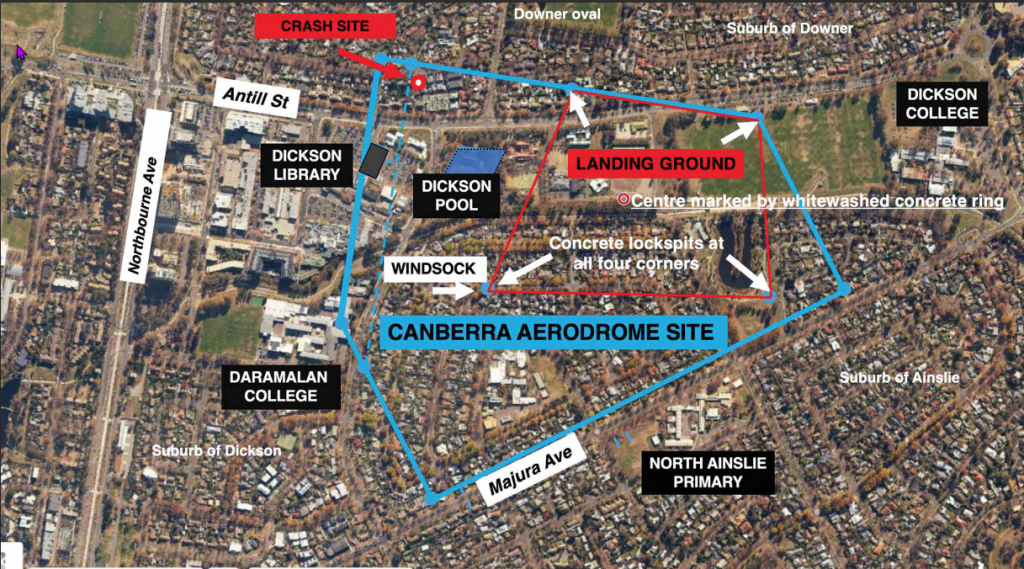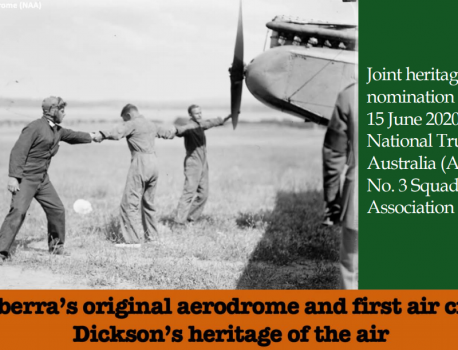How many of Canberra’s residents know the city’s original aerodrome was at Dickson?
And how many might know the aerodrome—which half a century later became known as the Northbourne Aviation Ground—played a major role in the formation of the national capital?
The aerodrome stretched from Dickson Library to the western half of Dickson playing fields, and the library bears a plaque that ‘marks the site of Canberra’s first aerodrome’.
In 1923, Defence commandeered the site from Edward Shumack, taking over the southern section of the soldier settlement block that was granted to him when he returned to Canberra from the Western Front in 1919.
The aerodrome was fenced and marked out, and at least 34 RAAF flights landed on the grassy field at Dickson to carry out aerial surveying and mapping for the Federal Capital Commission. This was cutting-edge technology at the time and resulted in bringing Walter Burley Griffin’s dream to life. Both military and civilian planes shared the aerodrome.
When the aerodrome was operating—on what is now the community precinct that includes Dickson Pool next to Antill Street—aircraft were guided by an 18-metre, whitewashed concrete ring. That ring was in the very centre of the landing ground, with whitewashed concrete markers at the four corners.
Now a joint heritage nomination is being made by the National Trust of Australia (ACT) and No. 3 Squadron Royal Australian Air Force Association, for the last tangible remnants of the aerodrome—the central ring marker and two of the lockspit boundary markers—which are believed to be buried beneath the surface and are therefore archaeological remains.
These markers are the only historical links to the original Canberra aerodrome.
“The reason this heritage nomination is being made now is to ensure there’s adequate room around the markers to do further research and begin to tell the story of what was once there,” president of the National Trust of Australia (ACT) Gary Kent says.
“There is very little evidence of the aerodrome today. The heritage nomination seeks to preserve the key remnants—the boundary markers for two corners of the landing ground and the remnants of a 60-foot concrete ring, used as a marker for the centre of the aerodrome.



